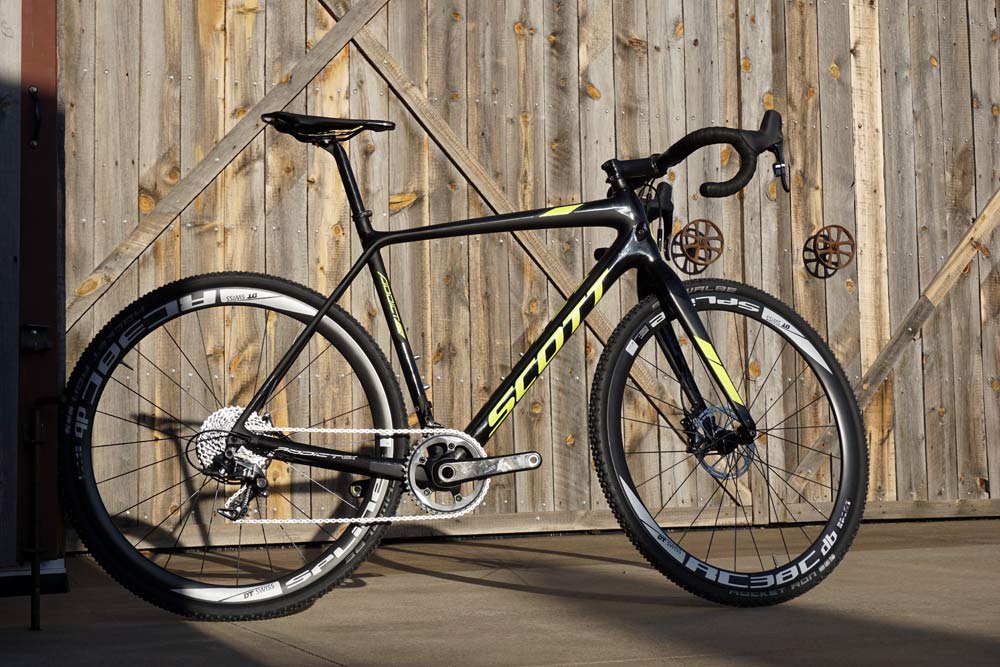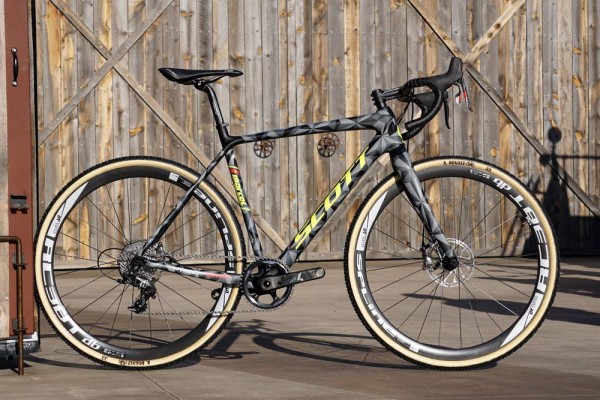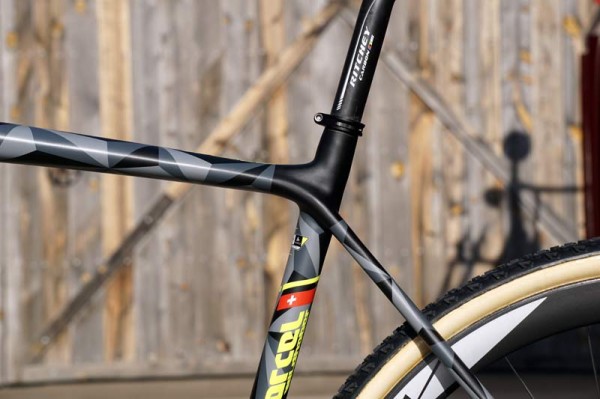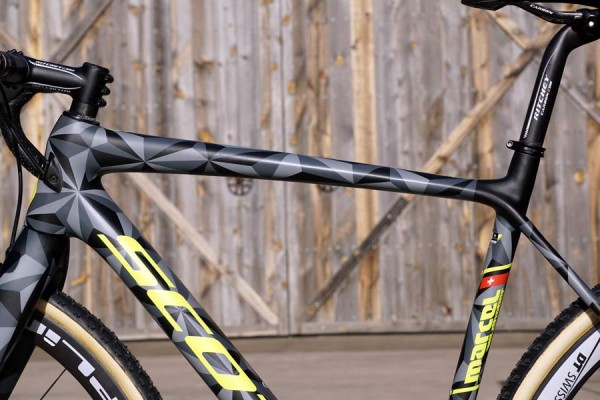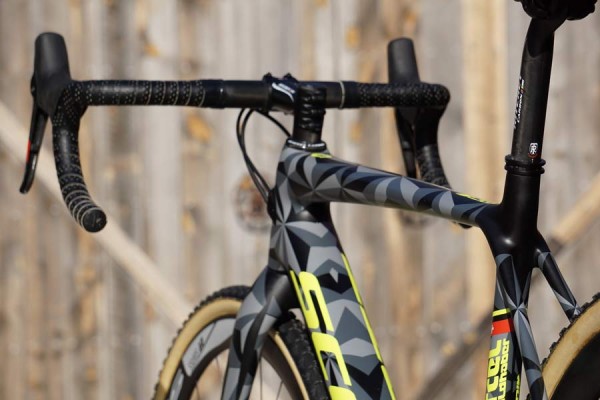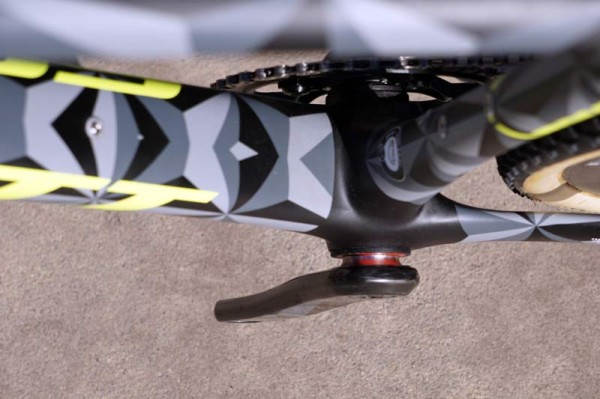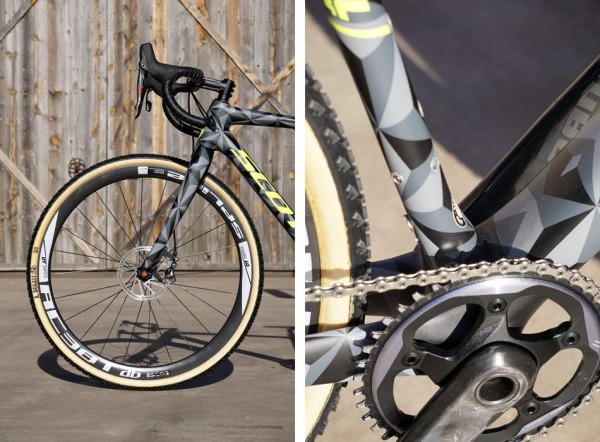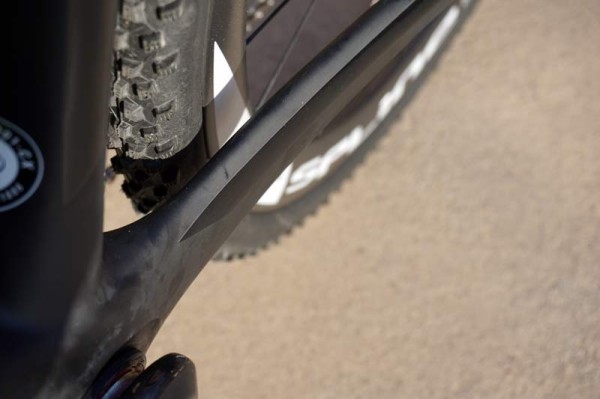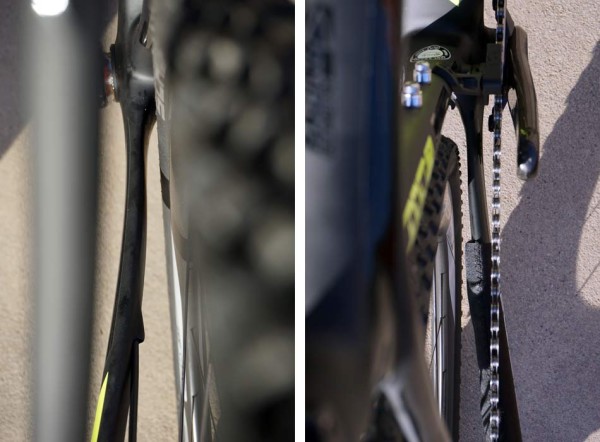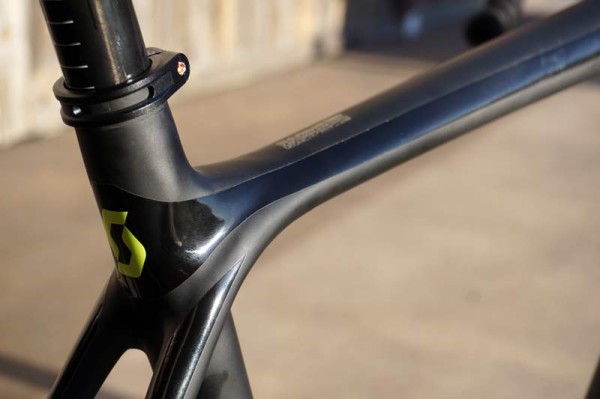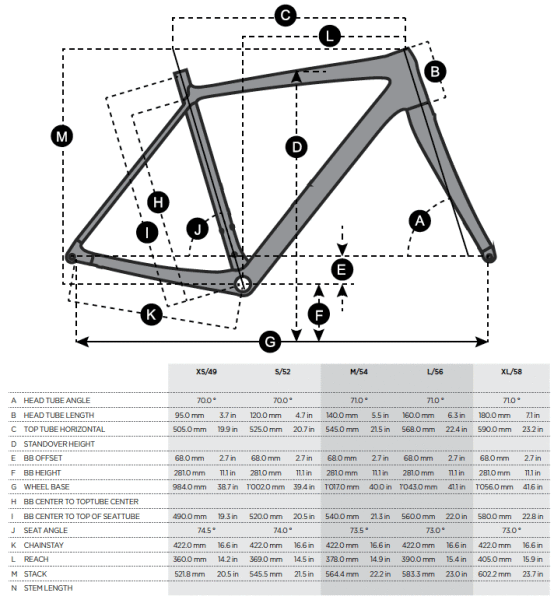Scott set about the Addict CX bike’s resurrection with three main goals: Make it lighter, more comfortable and boost stiffness in the bottom bracket and headtube for better handling and power transfer. They also wanted to make the frame more ‘cross specific with race inspired and optimized tube shapes.
Since their last iteration, things have progressed a bit. So disc brakes are a natural, and they went with Shimano’s new flat mount standard and thru axles front and rear to keep it as future proof as possible.
The bike was first spotted in the pits at the UCI Cyclocross world championships with a semi-official teaser from Scott about the same time. Here’s how it progressed into a production model…
Sadlly, Marcel Wildhaber’s angular camoflauge paint scheme is for prototypes only and won’t be a production option. But, the frame’s shapes and features are identical to the production model, so we split our camera’s lens time between the two. The stock offering will be the black with day glow yellow graphics, DT Swiss RC38C carbon wheels and carbon Syncros cockpit.
To make it light, the used their IMP carbon construction used on the Addict road bike for the front triangle, and they used hollow carbon dropouts in the back. Layup optimization handles the rest.
Claimed weight is just 890g for the frame (54) and 360g for the fork, equaling 1,250g for the pair with derailleur hanger, front derailleur mount and bolts. That, as they tell it, adds up to the lightest disc brake cyclocross frame and fork on the market. Compared to the prior Addict CX, it’s 60g lighter, which doesn’t sound like much until you consider they had to add disc brake mounts and the resulting reinforcements.
Compared to the old Addict CX, this one’s top tube adds 45% more comfort by borrowing shapes and layup from the Solace road bike, including the top tube’s morphing from round to oval as it moves from head tube to seat tube. It then splits into thin seatstays starting 30mm in front of the seat tube.
That puts the seat stay/seat tube junction about 21mm lower than before, and it’s combined with a thinner 27.2 seatpost. The complete package adds up to 61.5% more comfort as measured by total seat deflection.
The tubes are frame size specific, using different diameters, shapes and layups across frame sizes to maintain the same stiffness to weight ratio and match the ride characteristics to the expected rider.
The headtube uses integrated headset bearings, which let them increase the size and length of the tube to make it stiffer, and the lack of headset cups makes it lighter.
The top and down tubes are 57mm and 64mm wide, respectively, compared to just 50mm for both on the old model, so massive stiffness gains are made here. It seems to grow even wider as it approaches the BB, which balloons to a BB86 shell to handle the extra girth of the massive downtube. Combined, they say BB stiffness is up 14% and headtube stiffness is 32% higher.
The front derailleur mount is removable, and there are mounts for a chain guide, too. So, on a 1x setup like this, it can be kept very clean looking by removing all the mounts.
The fork’s 12mm thru axle uses a 1.5 pitch, so you don’t need to turn it as much to remove or tighten it.
In the back, they used standard mountain bike 12×142 dropouts to keep it simple.
The Fork is asymmetric to handle the higher bending load on the left side from the disc brake. Both sets of stays and the fork were opened up to allow up to a 40mm tire, and there’s 6mm to spare on either side at the rear. This was done partly as a request from team riders who train with 38s.
Despite that generous, gravel-grinder-like tire allowance, the Addict CX is a pure cyclocross race bike with ‘cross specific features to prove it. Mud clearance is important, but so is the ability to shed mud. So they shaped the chainstays into boxy sections on the bottom with angular tops to help the mud and crud slip off. It’s hard to show it in these pics, but the top of the chainstays gets very thin and slopes off to the outside.
Other ‘cross friendly features include tube shaping and the cable runs. The top and down tubes were shaped not just for stiffness, but also for ease of carrying. They’re smooth thanks to a lack of external cables, making it comfortable for shouldering and lifting over the barriers and run ups. The internal cable guide pieces are easily removable for larger openings to help get the cables and hoses in and out during installation. There’s even a spare port for stealth dropper posts if and when they become a thing in ‘cross. Versions for mechanical and electronic drivetrains are available and all the parts ship with the bike.
It may not be that killer camo pattern, but the black does do a nice job of blending matte and gloss…
…which is complemented by the carbon Syncros components.
For Europe, there’ll also be a lower level Addict CX 20, but the U.S. will only see the top of the line Addict CX 10 as shown here (in black). All markets will also get the Speedster alloy disc brake cyclocross bikes, the details of which will be fully released in early summer. Prices are:
- Addict CX 10 – €5999 / $5899 (available October)
- Addict CX 20 – €3499 (Europe only)
- Speedster CX 10 – €1499 / $1699 (available July)
- Speedster CX 20 – €1199 / $1199 (available July)
That’s not all Scott had to show off at their pre-Otter party, stay tuned for a closeup look at their Spark 700 Ultimate Di2 mountain bike.
